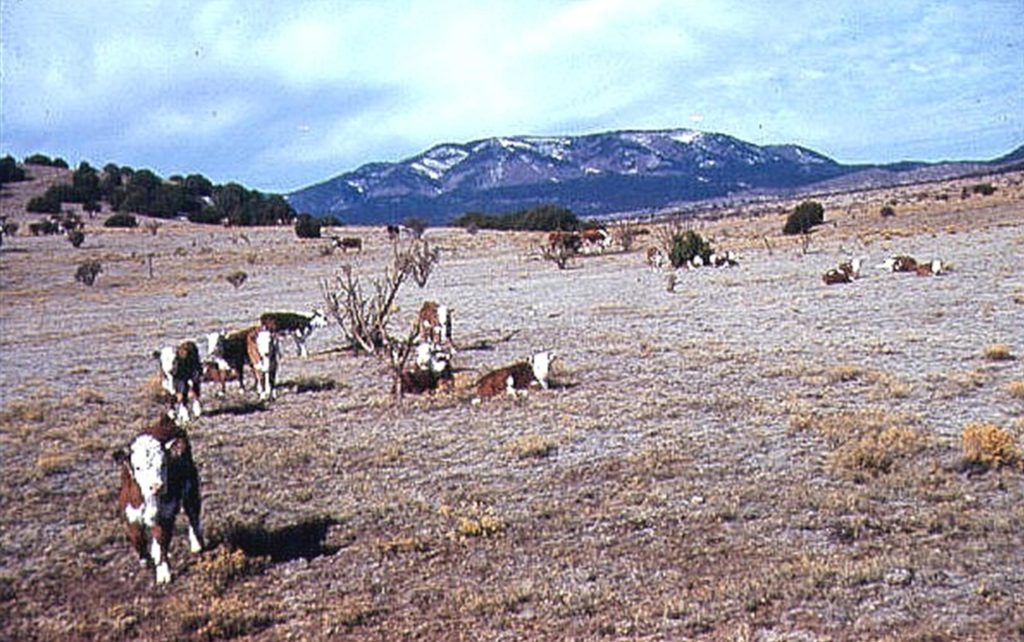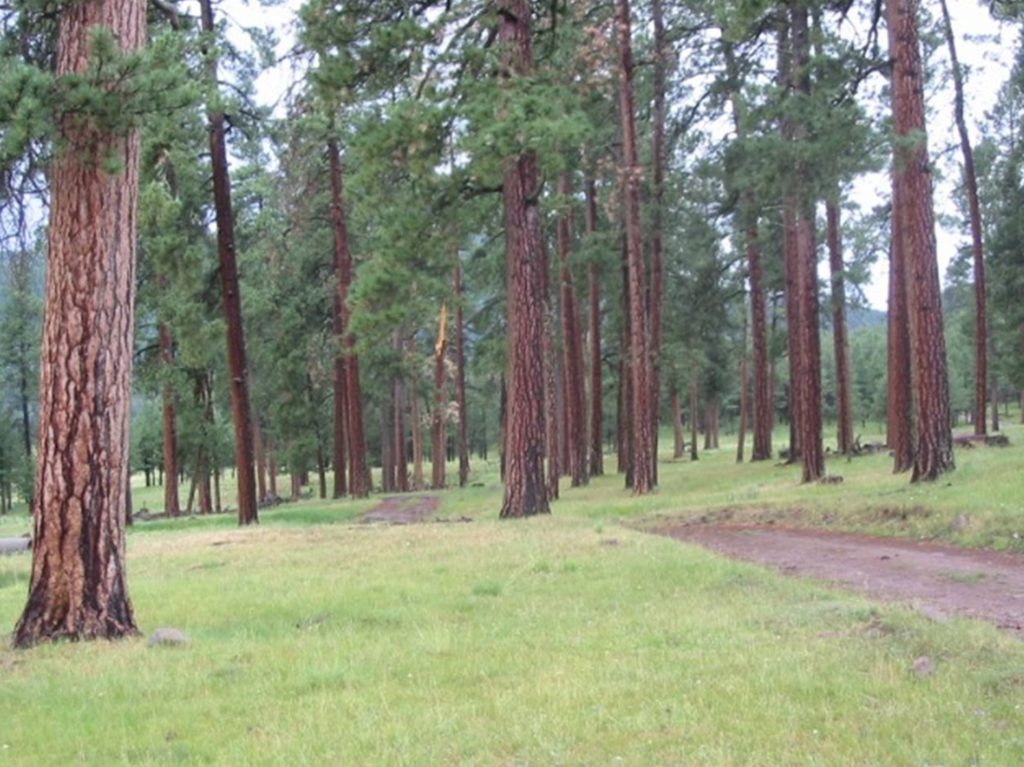HMI was excited to hear that long-time Holistic Management practitioners, Sid and Cheryl Goodloe of the Carrizo Ranch, received the 2022 New Mexico Leopold Conservation Award. Earlier this year, New Mexico landowners were encouraged to apply (or be nominated) for the award. Applications were reviewed by an independent panel of agricultural and conservation leaders. Among the outstanding New Mexico landowners nominated for the award was finalist JX Ranch of Tucumcari in Quay County, and Philmont Scout Ranch of Cimarron in Colfax County. The first Leopold Conservation Award in New Mexico was presented to Ute Creek Cattle Company of Bueyeros in 2021.
Congratulations, Sid and Cheryl!
To learn more what Sid and Cheryl have been able to accomplish over the years, read Sid's article below.
38 Years of Holistic Management on Carrizo Valley Ranch
by Sid Goodloe
My relationship with Holistic Management started after I had spent 10 years on a small abused ranch that I hadn’t begun to pay off. Perhaps if I had understood Holistic Management things might have been different, but in the 50’s and 60’s cattle prices and weather were anything but favorable.
Out of Africa

The events that led up to that relationship began while I was managing the Fort Stanton Range Research Station for NMSU. I was asked to show two gentlemen from New York what we were doing on the station so they would have some idea of how to manage cattle in a semi-arid environment. I learned that they had a contact with the Range Management Division of the Ministry of Agriculture in Kenya to try to improve ranch management there.
I had read enough about East Africa to know that it supported some of the best cattle country in the world and I had dreamed of ranching there for years. In fact, the Mau-Mau Rebellion had stymied my plans to go there 10 or 12 years earlier. When I was offered the chance to work in Kenya, I couldn’t refuse, so I arranged things for my family and me to go there.

I arrived in Kenya in January 1967 and spent the next 2 1/2 years as the Range Management Advisor for the Rift Valley Province. During that time I made two trips to Rhodesia to visit my friend, Aubrey Mountain, who was a Nuffield Scholar and had spent time with us on Carrizo Valley Ranch. Aubrey told me of a new approach to grazing management and, at a field day near Que Que, I met Allan Savory and Robert Vaughn-Evans. The subject that day was Short Duration Grazing (SDG) and the enthusiasm of the ranchers in what it was accomplishing indicated to me that a break-through in land management was unfolding in an obscure country among independent thinkers.

I returned a year later and spent the rest of my time there talking to ranchers who were practicing Short Duration Grazing, and I got further information from Allan about the origin of this non-traditional grazing method. I returned to Kenya and with the help of Dr. Gene Payne of Montana State, who was in Kenya at the time, wrote an introductory description of SDG for the Journal of Range Management. It was published in November 1969.
I returned to Carrizo Valley Ranch in 1969 and immediately began to divide paddocks, not using the cell approach, but by topography and water availability. I used suspension fences patterned after the ones I had seen in Rhodesia, and in a few months time, had at least a start on this revolutionary grazing method.

I decided to use the money I had saved while working in Kenya to go back to Texas A & M for a Masters in Range Management. While there, I taught a lab for Dr. E. J. Dyksterhuis and became acquainted with Dr. C. L. Leinweber, the head of the Range Science Department. Apparently he thought Short Duration Grazing made some sense because he adopted the basic principles, changed the name to High Intensity, Low Frequency Grazing and began implementing it at Sonora and other research stations.

Allan was finally able to make it to the United States in the ‘70s where he found a somewhat different climate in more ways than one. I arranged for him to visit range personnel at several land grant universities in the western U.S. This created a great deal of interest and skepticism among range scientists and research personnel. How could anything more sensible than our 3-herd, 4-pasture system come from some unknown place in Africa? In fact, as you know, the skepticism continues today.
First Steps
Meanwhile back at the Carrizo Valley Ranch, I was sticking to the basic principles of Short Duration Grazing and noticing a general improvement in range condition and biodiversity. In the late ‘70s SDG became the Savory Grazing Method, and later the Center for Holistic Management was created in Albuquerque. It was about 1980 when I first heard the term “Holistic Ranch Planning.” I read about Jan Smuts and his belief that Nature operated holistically and I began to realize that I needed to look further down the road and consider all the natural resources available on Carrizo Valley Ranch. I had been focused mostly on beef production without planning how to use other sustainable sources of income. I needed to define my goals more clearly and move forward to attain those goals.
As far as the quality of life statement is concerned; it is pretty hard to beat ranch life as we knew it if you could make a living doing it! Part of my quality of life that was very important to me was to be able to have my family take part in all of the ranch activities such as branding in the spring, shipping in the fall, cattle movement, etc. Those goals have been reached, although I must admit jobs like fence-fixing, windmill work and other grunt work sometimes get put off until Cheryl and I decide to get it done.
Stockpiling Rain
My primary production goal was to grow as much grass as the rain would allow and control erosion. This led to the realization that there were too many invading trees that were not only suppressing grass growth, but causing sheet and gulley erosion. It has taken 50 years to achieve that objective or goal and now we are able to keep much of the rain that falls on the ranch—on the ranch! I also realized that the cattle that were on the ranch at purchase didn’t fit the environment, so in 1965 I changed to a breed that had no eye or udder problems and could handle the cold, snowy weather better. Our primary production goals have been met, although there is always room for improvement.

Our future resource base description describes us as being good land stewards, and over the years I have found that it requires at least five principles:
Know the history and climax condition of your ecosystems
Manage { those ecosystems} in a holistic manner – taking into consideration all parts as you plan for a profitable enterprise ( in our case, livestock, wildlife, aesthetics and recreation)
Move animals—Short Duration Grazing, Savory Grazing Method, Planned Grazing—whatever you do—avoid continuous grazing
Monitor your land use and be flexible enough to change direction and re-plan
Share your experience with others (workshops & tours)

We have used a wide variety of vegetation manipulation methods to accomplish our landscape goal and sustain what we want to produce. They have included: chaining; dozing and piling; seeding; fire; hand grubbing; and herbicide. We purchased a small saw mill several years ago to utilize thinned Ponderosa. We were able to build a log home using our own timber and logs.
Considering all of the parts of our ecosystem brings us closer to a properly functioning watershed which, in turn, allows us to focus more intently on riparian rehabilitation. Our philosophy is to defer the riparian area during the growing season and flash graze it during the dormant season. This compliments our Planned or Short Duration Grazing in a small way. A lush riparian zone is also attractive to all forms of wildlife, and when combining that with uplands in near climax condition, fee hunting becomes a major player in the overall profitability of the ranch.
An established ingredient in our holistic approach to natural resource use is a garden and orchard that furnishes fresh vegetables and fruit for us and our Saturday morning Farmers Market in Capitan. We also market grass fed beef for a growing clientele. Firewood is also a significant source of income as we return the overgrown areas to an open woodland or savanna.
We feel that if our way of life is to survive in a world drifting away from hands-on agriculture, we need to offer the public a chance to experience some of the history that made us what we are today. In October of this year we are marking our 20 anniversary of the Lincoln County Cowboy Symposium that includes everything western. We have the richest Chuck Wagon Cook Off in the country, western music, cowboy poetry, and 140 vendors.
There is one missing link in holistic ranching today. If we are going to do all the things that provide us a desired quality of life, an aesthetic, productive landscape and economic sustainability, where is the permanence in what we have accomplished? Do we want our grandchildren to someday drive by a new subdivision and say to their friends, “That used to be my Granddad’s ranch?”
Carrizo Valley Ranch is protected from that fatal end with a conservation easement that provides our heirs with the opportunity to continue ranching and raise their families in a rural environment where they will learn a work ethic, dependability, innovation, and a love for the land.
I consider myself extremely fortunate to have been exposed to the beginning of a new and dramatic approach to range and livestock management. Although I don’t always agree with Allan, his holistic approach has had a positive affect globally as well as on Carrizo Valley Ranch. It’s been a fun trip and I appreciate the ride. I have been able to connect the dots over a half century on a property large enough to offer meaningful results. I am very grateful for that opportunity.
